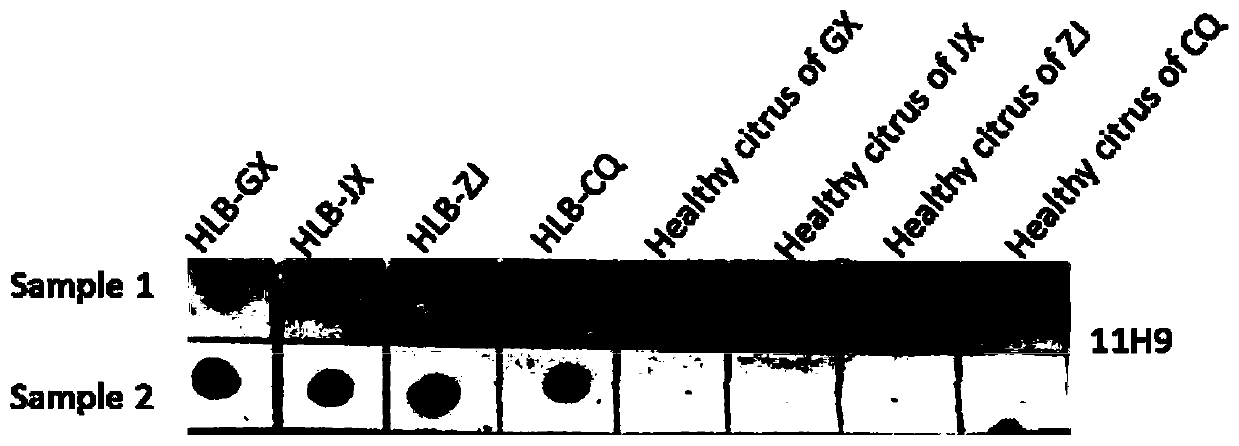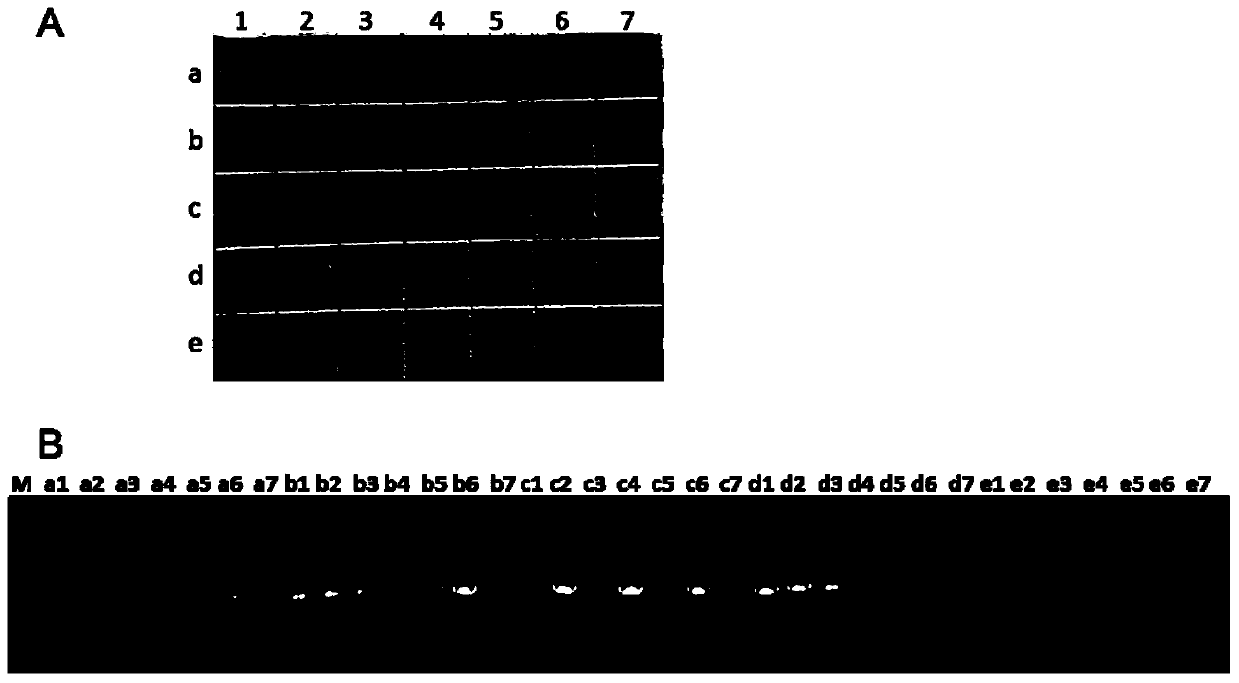Hybridoma cell strain secreting monoclonal antibody resistant to Candidatus Liberibacter asiaticus pathogens and application of monoclonal antibody
A technology for citrus huanglongbing and hybridoma cell lines, which is applied in the directions of antibacterial immunoglobulins, analytical materials, biochemical equipment and methods, etc. question
- Summary
- Abstract
- Description
- Claims
- Application Information
AI Technical Summary
Problems solved by technology
Method used
Image
Examples
Embodiment Construction
[0017] The hybridoma cell line 11H9 secreting monoclonal antibody against citrus Huanglongbing was deposited in the General Microbiology Center of China Microbiology Culture Collection Management Committee, Institute of Microbiology, Chinese Academy of Sciences on January 25, 2019. The preservation number is CGMCCNo.17285. It can secrete anti-citrus Monoclonal antibody against Huanglongbing bacteria.
[0018] The anti-citrus huanglongbing monoclonal antibody secreted by a kind of hybridoma cell line, the anti-citrus citrus huanglongbing monoclonal antibody ascites indirect ELISA titer reaches 10- 7 , the antibody type and subclass are IgG1 and kappa light chain. The monoclonal antibody has a specific immune reaction with the about 56Kda Huanglongbing bacteria protein in the leaves of citrus Huanglongbing disease. It was found by ACP-ELISA and dot-ELISA method analysis that the monoclonal antibody detection The sensitivities of crude extracts from Huanglongbing diseased leaves ...
PUM
 Login to View More
Login to View More Abstract
Description
Claims
Application Information
 Login to View More
Login to View More - R&D
- Intellectual Property
- Life Sciences
- Materials
- Tech Scout
- Unparalleled Data Quality
- Higher Quality Content
- 60% Fewer Hallucinations
Browse by: Latest US Patents, China's latest patents, Technical Efficacy Thesaurus, Application Domain, Technology Topic, Popular Technical Reports.
© 2025 PatSnap. All rights reserved.Legal|Privacy policy|Modern Slavery Act Transparency Statement|Sitemap|About US| Contact US: help@patsnap.com



